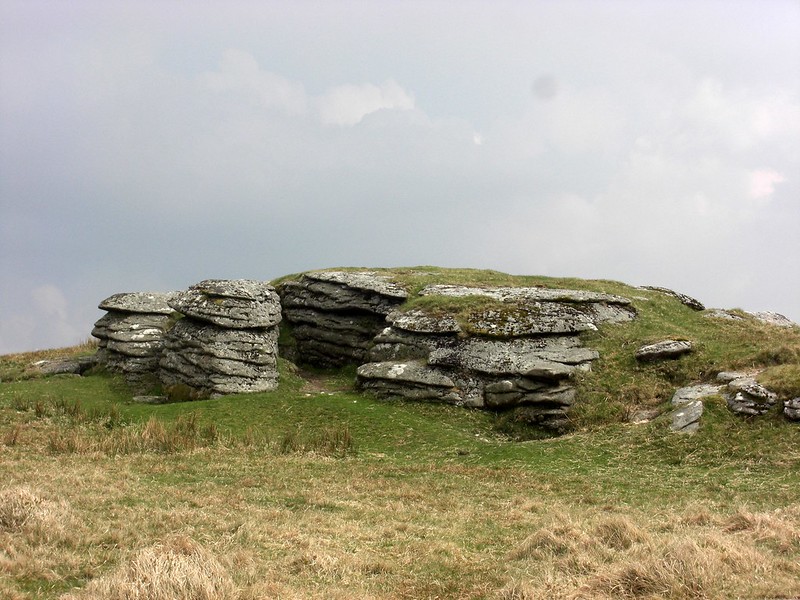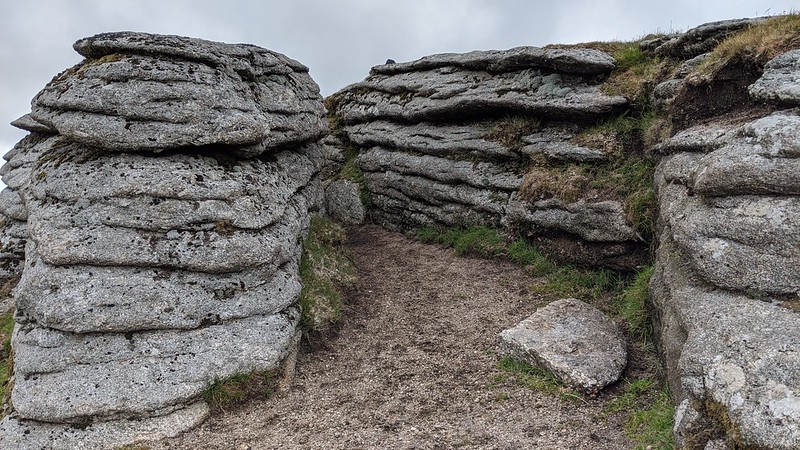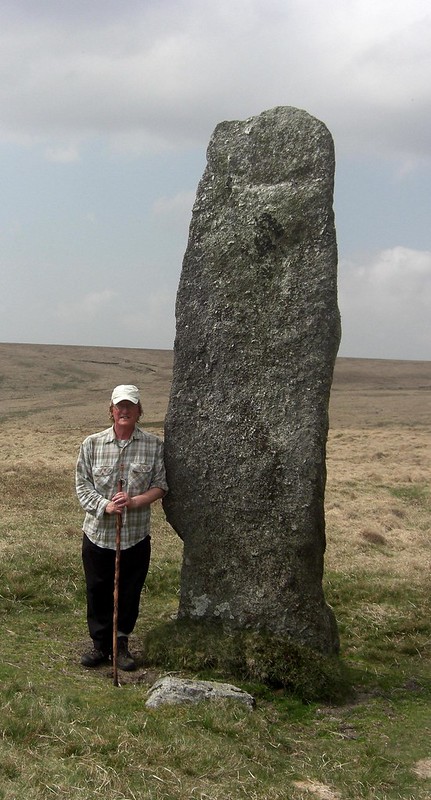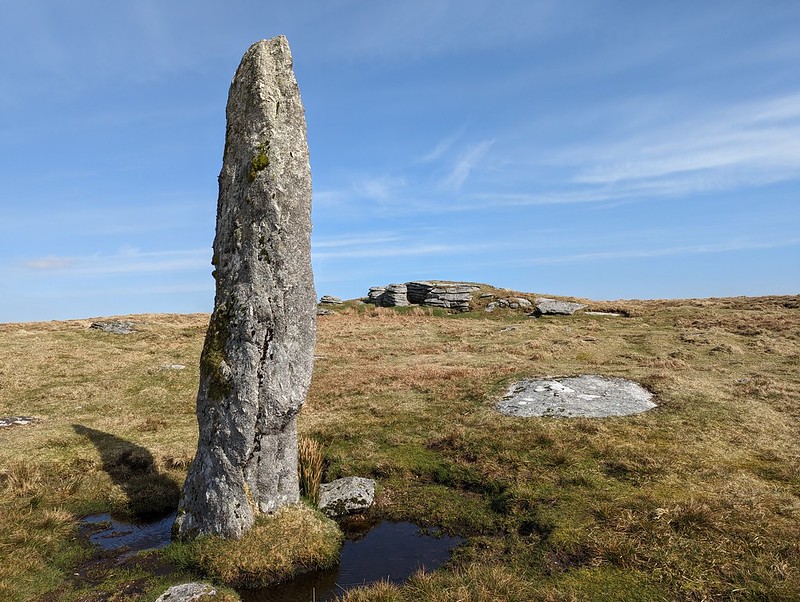TORS OF DARTMOOR
a database of both lesser- & well-known rocks and outcrops
Devil's TorDevils Tor, Devil Tor
 Despite its insignificance, and being one of Dartmoor's tiniest rockpiles, Devil's Tor has quite a reputation and much has been written about it in the literature. There is essentially one main outcrop which is nothing more than a bump on the otherwise extensive southern spur of Summer Hill. That said the north side of the tor still reveals an interesting rock face, with a low avenue where sheep are known to take shelter. Crossing (1909) is quite dismissive of the substance of the tor, writing "which does not consist of piles of granite, but merely of flat rocks scattered about the hill."  Without exaggeration, the most celebrated feature is the tall granite blade of the Beardown Man standing stone (or menhir), which overlooks this lowly tor like a silent guard keeping watch over every weary traveller who begins their trek into the wilds of the North Moor. Unlike other standing stones across the moor, the Beardown Man is supremely isolated, and far removed from any other documented prehistoric monuments, save for a dilapidated cairn to the south-west at SX 59476 79410. In addition it is the second-tallest menhir on Dartmoor behind Drizzlecombe, and is roughly 3.5 metres tall from base to top.  Many a story is told of this stupendous relic. Baring-Gould recounts one such tale in 'The Graphic': "In every direction, far as the eye can range, extends brown desolate moorland, broken here and there with humps of protruding rock, weathered by storm into the semblance of stratification. A bow-shot from this upright stone [Beardown Man] rises a hump that goes by the name of Devil Tor; and the stone in question apparently formed originally the topmost slab of this granite pile. But when removed, by whom, and with what object, remains a mystery." He continues: "The monolith, blackened by lichen, standing in such utter solitude, was no doubt thought to bear some resemblance to the Great Enemy of Man, and the adjoining Tor was regarded as his throne, on which he seated himself but once in twelve months, on Midsummer Eve..."  There is so much mystery surrounding the stone that the tor is often overlooked and on its own the menhir is quite distinctive from the north as the stone is seen thin like a wafer. With Devil's Tor as its companion, a visit is thoroughly recommended on a clear day to experience the far-reaching views. Brian Carter (1985) sums it up perfectly: "Here I discovered an incredible spaciousness that glimmered and twitched under the shift of light. It was all sky and wilderness and only the wind was singing now across silence."
| ||||||||||||||||||||||||||||